SRI LANKA HOLIDAYS:
Total Holiday Expeience awaits you in The Land of Delights. Tour the beautiful island of Sri Lanka with Riolta Sri Lanka Holidays, Sri Lanka.
“As to the linguistic character of Sinhalese it is now generally admitted by scientist that it is one of the Indo-Aryan Vernaculars like Marathi, Bengali, and Hindi etc”
Dr. Wilhelm Geiger: A Grammar of the Sinhalese Language. AES Reprint ISBN 81-206-1134-9
Philological evidence shows that Sinhala, the language of Sinhalese of Sri Lanka, is ultimately derived from old Indo-Aryan (Sanskrit) through middle Indo-Aryan or Prakrit (whose best representative is Pali, the language of the Buddhist scriptures). The Sinhala language is therefore a member of the Aryan family of languages, which is a member of a still larger family of languages known as Indo-European. The Indo-European family of languages, which is by far the largest and the most widely distributed linguistic group in the world, includes such modern languages as German, French, English, Persian and Hindi. The parent Indo-European speech, which is the source of all these languages is believed to have flourished about 5000 years ago in central or
Pali Works in
Pali, a classical Indo-Aryan language is a literary form of the vernacular which the Buddha used in his discourse.
3rd century B.C.
Thera Upatissa compiles, in Pali, Mahabodhivamsa, the history of Bodhi branch at
4th century AD
Dipavamsa, the oldest Pali chronicle of
5th century AD
Thera Mahanama compiles the first part of epic poem Mahvamsa ( Great Chronicle”) in Pali.
{{ According to Prof. Gunapala Peiris Malasekera who edited the commentary to the Mahawansa, Dr. Wilhelm Geiger who translated the Mahawamsa & Dr. Anada Guruge who, there was an earlier Mahawansa-in the Sinhala language titled ‘Sihalatthkatha Mahawansa” It is now accepted by scholars that Maha = Vansa are both Pali words derived from Sanskrit. According to the authoritative Pali-English Dictionary edited by Prof. T. W. Rhys-Davids & Dr. William Stede, the word Mha is derived from the Vedic Mahant meaning “great, extensive, big, and important”. According to the same dictionary Vansa is derived from Vedic Sanskrit Vanasa & means ‘lineage, race, family” Scholars have accepted that Theravada means the Doctrine (Vada) of the Elders (Thera) both Pali words, occurring in the Pali cannon. Mahayana means Maha (the great),
There Mahanama compiles “The Mahavamsa–Tika”, the commentary on the Mahavamsa called Vamsatthappakasini
13th century AD
Ven Dhammakirti compiles the second part of Mahavamsa in Pali
Sinhala script is derived from the Brahmi script, in which the famous edicts of Great Mayuran King Asoka of
304-240 BC. Ven. Mahinda who preached Theravada based on the Sthaviravadin School of Buddhist thought & established Mahavihara (Great Monastery) of Anuradhapura, Sri Lanka teaches first of the Tipitaka commentaries in the Sinhala language, having translated them from Pali.
{{The Magadhi language, which Arhant Mahinda Thera at Mihintale spoke, would have been similar to Sinhala. The Asokan inscriptions are similar to Sinhala inscriptions of the 3rd century B.C.}}
5th Century AD
Quote Mahavamsa
Addressing Ven. Buddhaghosa of
Unquote Mahavamsa
It was only after Mahavihara monks were satisfied with Ven. Buddhaghosa’s capabilities which he proved by writing the encyclopedic Visuddhi Magga (the path of Purification), that he was given the ancient Sinhala commentaries.
The most outstanding author in the history of Pali literature, Ven Buddhagohasa studied the various Sinhala commentaries (including the tipitaka commentaries of Ven. Mahinda) on the Theravada cannon-drawing primarily on the Maha atthakatha (Great Commentary) preserved at the Mahavihara- & translates them into Pali. Ven Buddhagohasa’s tremendous contribution made Sinhala Buddhist scholarship available for the first time to the entire Theravadan world & marks the beginning of what will become, in the centuries to follow, a vast body of post –canonical Pali literature. One of his works Samantapasadika , a commentary on the Vinaya Ptika of Tipitaka was translated into Chinese in 489 AD. By way of his numerous scholary works in Pali, Ve. Buddhaghosa firmely established the language in the Buddhist world.
Sanskrit inscriptions and the existence of extensive Sanskrit literature attest to the importance of Sanskrit in
There were also Sanskrit treatise on Silpa-sastras, particularly on statuary art e.g. Sariputra. In about 1245 a Brahmin scholar from Gauda (Bengal) named R Kavibharati arrived in
Sinhalese Buddhist monks of the Mahayana Cannon made use of Sanskrit as a vehicle of their ideas and studied the language and its literature extensively.
Of the extant Sinhalese Literary works, the oldest is Siyabasalankara, a text on poetics composed in the 9th century after the Kavyasarsa of Dandin. Works of Kalidasa of India were very popular in
Although writers of the Polonnaruwa period 9-12th centuries showed greater inclination to promote the study of Sanskrit and Pali some important Sinhalese works were composed during this period. Such works include Sasa-davata, which is a versification of the Pali Sasa Jataka and was probably composed around 1197 AD. The famous work called the Amavatura is a sort of prose poem composed by Gurulugomi, narrating the progress of Buddhism. There were numerous other works in Sinhalese literature that contains innumerable references to and quotations from Buddhist – Sanskrit texts.
A novel feature in the late medieval Sinhalese literature was the introduction of the sandesa-kavyas influenced by Kalidasa’s Meghaduta. The reign of Parakramabahu (1348-60) witnessed the appearance of the first sandesa-kavyas in Sinhalese.
The foregoing survey makes it abundantly clear that Pali and Sanskrit literatures not only inspired Sinhalese scholars and writers to compose excellent works in these languages, but also led the growth of a fairly extensive literature in the language of the land, which shone with multi-faceted brilliance. The Contribution of South Indian languages particularly Tamil, in the evolution of SH language cannot be ignored.
12th century A.D.
Ven. Rajaguru Dhammakitti compiles Dathavamsa , the History of Sacred Tooth Relic based on an earlier Sinhala work.
14th century AD
Ven. Dharmakirti the second compiles Nikayasangraha, the history of Buddhism from Buddha’s final extinction to the reign of King Bhuvanaikabahu the fourth (1360-1391AD).
Numerous Sinhala Buddhist literary works in Pali, Sanskrit & Sinhala had been set on fire by the rash of marauding Dravidian invaders from









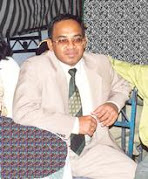













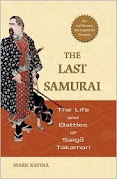










































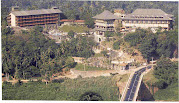








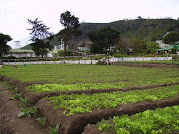














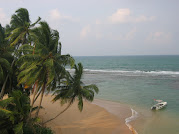












0 Comments:
Post a Comment